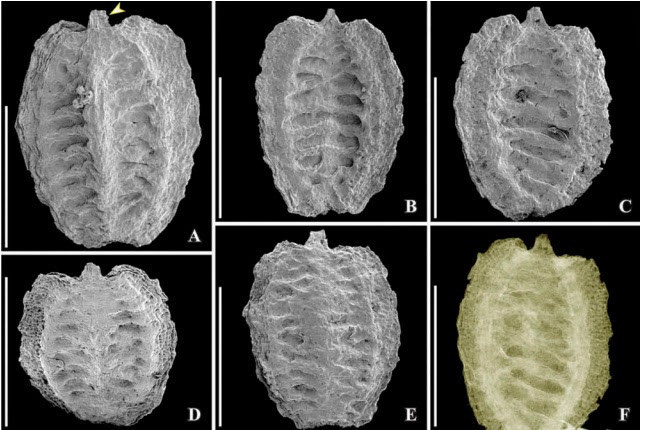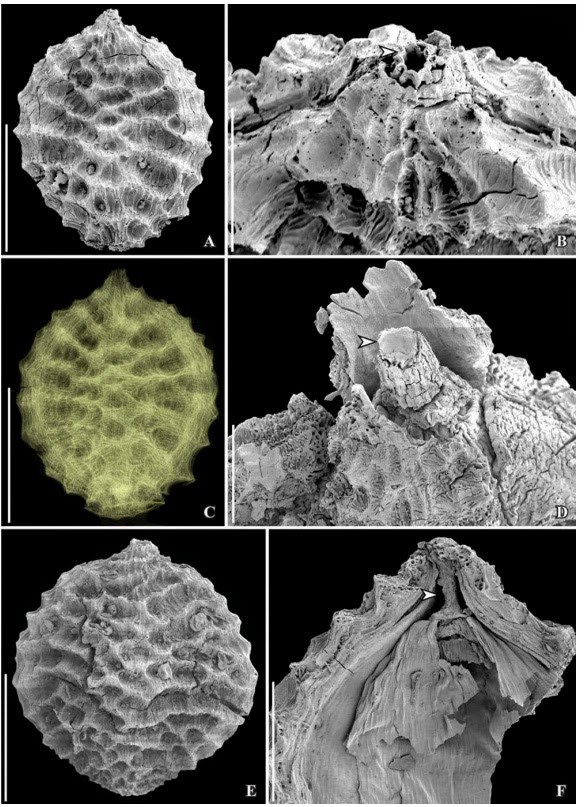
A paleontóloga sueca Else Marie Friis e colegas publicaram mais um artigo sobre a flora fóssil do Cretácico de Portugal, desta vez sobre uma planta próxima da famosa e bizarra Welwitschia mirabilis, com a descrição de um novo género e novas espécie: Bicatia costata e B. juncalensis são as nova espécies de Welwitschoidea (em Português: welwitchóide) de Juncal e Famalicão.
Abstract:
Bicatia gen. et sp. nov. from the Early Cretaceous of the Northern Hemisphere is described based on three species of dispersed seeds: Bicatia costata from the Juncal and Famalicão localities (western Portugal) and the Kenilworth locality (eastern North America), B. juncalensis from the Juncal locality, and B. rugosa from the Puddledock locality (eastern North America). Seeds of B. costata and B. rugosa are known from both lignitised (Juncal, Kenilworth, Puddledock) and charcoalified specimens (Famalicão, Puddledock), whereas seeds of B. juncalensis are known only from lignitised material (Juncal). All three species have the same characteristic chlamydospermous organisation seen in the wide range of other Early Cretaceous seeds that have been assigned to the Bennettitales-Erdtmanithecales-Gnetales (BEG) group. However, the species of Bicatia differ from all previously described BEG seeds in having a disymmetrical and flattened seed envelope
with more or less distinct lateral wings. All three species are also closely associated with polyplicate pollen grains that have a prominent distal colpus. Pollen grains of this kind are very similar to those of extant Welwitschia. The combination of seed and pollen features seen in Bicatia provides the strongest documentation so far of Welwitschia-like plants in the Northern Hemisphere during the Early Cretaceous.
Referência:
Else Marie Friis, Kaj Raunsgaard Pedersen & Peter R. Crane (2014): Welwitschioid diversity in the Early Cretaceous: evidence from fossil seeds with pollen from Portugal and eastern North America, Grana, DOI: 10.1080/00173134.2014.915980






Sem comentários:
Enviar um comentário